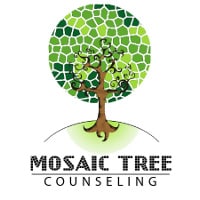Play Therapy
Because children’s language development lags behind their cognitive development, they communicate their awareness of what is happening in their world through their play. In play therapy toys are viewed as the child’s words and play as the child’s language–a language of activity. Play therapy, then, is to children what counseling or psychotherapy is to adults. In play therapy the symbolic function of play is what is so important, providing children with a means of expressing their inner world. Emotionally significant experiences can be expressed more comfortably and safely through the symbolic representation the toys provide.

The use of toys enables children to transfer anxieties, fears, fantasies, and guilt to objects rather than people. In the process, children are safe from their own feelings and reactions because play enables children to distance themselves from traumatic events and experiences. Therefore, children are not overwhelmed by their own actions because the act takes place in fantasy. By acting out through play a frightening or traumatic experience or situation symbolically, and perhaps changing or reversing the outcome in the play activity, children move toward an inner resolution, and then they are better able to cope with or adjust to problems. In a relationship characterized by understanding and acceptance, the play process also allows children to consider new possibilities not possible in reality, thus greatly expanding the expression of self.
In the safety of the play therapy experience, children explore the unfamiliar and develop a knowing that is both experiential-feeling and cognitive. It can then be said that through the process of play therapy, the unfamiliar becomes familiar, and children express outwardly through play what has taken place inwardly. A major function of play in play therapy is the changing of what may be unmanageable in reality to manageable situations through symbolic representation, which provides children opportunities for learning to cope (Sprunk, Colwell, Mitchell, Smith, Carmichael, & Frick-Helms, 2012). Play therapy has been demonstrated to be an effective therapeutic approach for a variety of children’s problems including, but not limited to, the following areas: abuse and neglect aggression and acting out attachment difficulties autism burn victims chronic illness deaf and physically challenged children dissociation and schizophrenia emotionally disturbed children enuresis and encopresis problems. Therapeutic play allows children the opportunity to express themselves fully and at their own pace with the assurance that they will be understood and accepted (Homeyer & Morrison, 2008). At Mosaic Tree Counseling, we have a large playroom with sand tray therapy, multi-sensory items, play dough, feelings charts, calm down area, and so forth.
Homeyer, L. E. & Morrison, M. O. (2008). Play therapy: Practice, issues and trends. Retrieved from http://www.journalofplay.org/sites/www.journalofplay.org/files/pdf-articles/1-2-article-play-therapy.pdf
Sprunk, T., Colwell, N. K., Mitchell, J. A., Smith, J., Carmichael, K. & Frick-Helms, K. (2012). Play therapy best practices. Retrieved from http://c.ymcdn.com/sites/www.a4pt.org/resource/resmgr/Publications/Play_Therapy_Best_Practices.pdf
Therapy Modalities
Abuse & Neglect
ADHD
Anxiety
Bipolar
Career Counseling
Communication Difficulties
Couples Therapy
Depression
Eating Disorders
Employee Assistance
Impulsive Behavior
Obsessive Compulsive Disorder (OCD)
Oppositional Defiant Disorder (ODD)
Play Therapy
Posttraumatic Stress Disorder (PTSD)
Self Esteem
Self Mutilation
Shop
Social Skills
Request More Information

